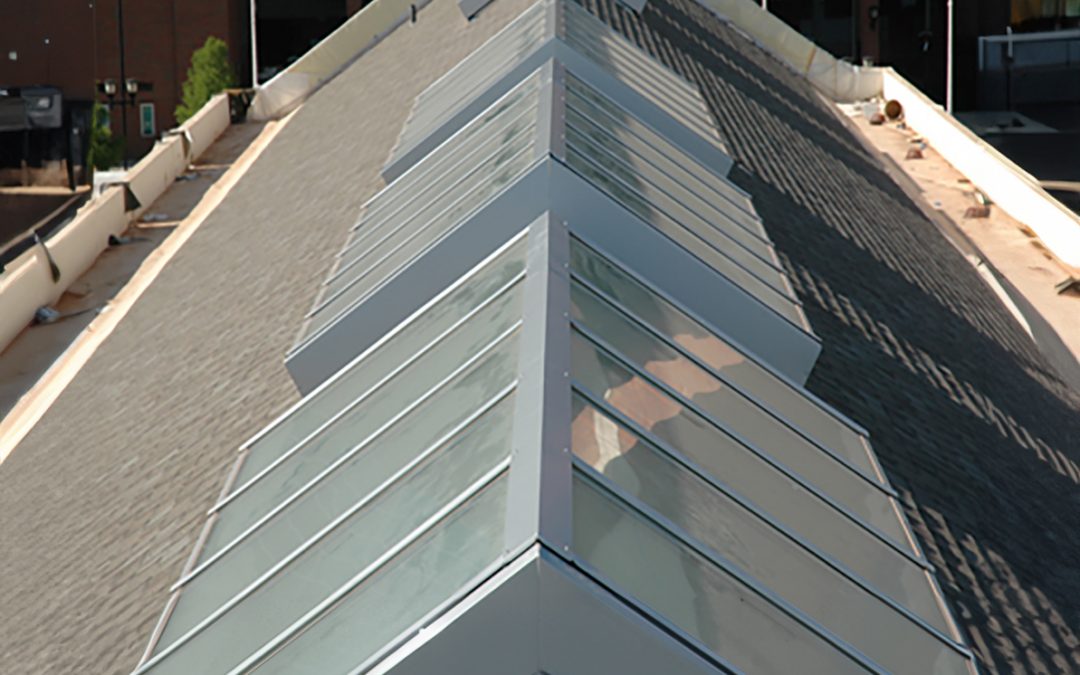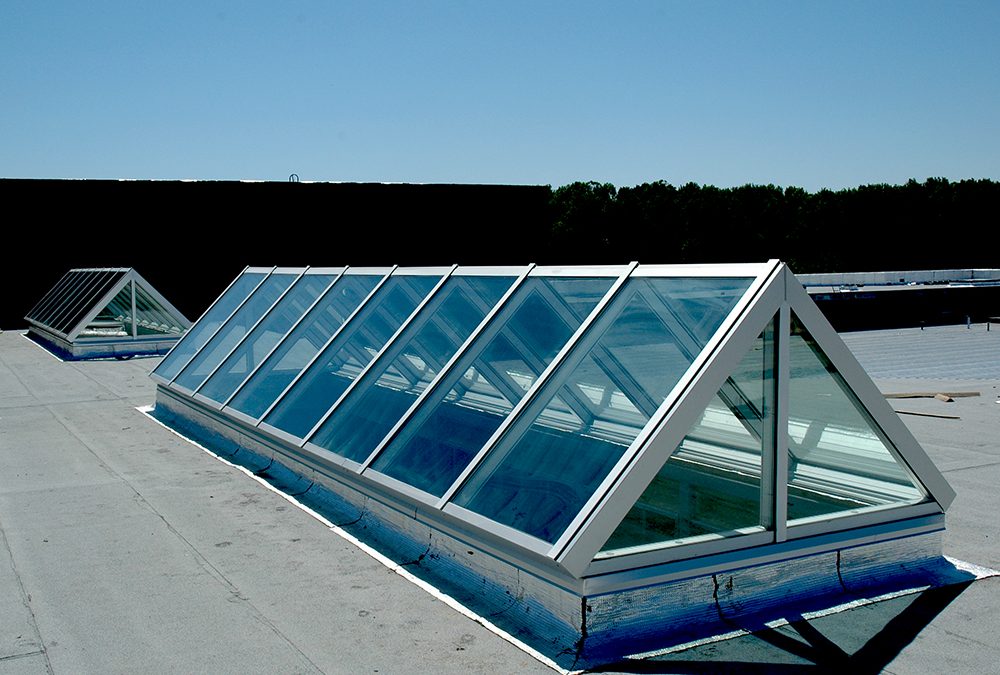The Glazing Showdown: Why Polycarbonate Triumphs over Fiberglass in Architectural Projects
While the size of the project does impact the material selection between polycarbonate and fiberglass, other considerations include aesthetic preferences and long-term durability.
In the world of architectural and construction industries, the selection of materials for glazing applications can significantly impact the success and performance of a project. Two popular contenders, polycarbonate and fiberglass, vie for attention, but when it comes to glazing, one material emerges as the clear winner: polycarbonate. While the two products can look similar at a glance, the differences are many.
In this article, we will delve into the advantages of polycarbonate over fiberglass, exploring its superior transparency, strength, durability, thermal insulation, UV stability, and ease of installation. Architects and construction professionals, take note: polycarbonate is the clear choice for glazing applications.
This showcase project, located in Essex County, boasts a stunning facade crafted with cobalt blue-colored polycarbonate panels the length of 2 tennis courts. These panels lend the building a captivating and undulating form reminiscent of the nearby Atlantic Ocean and Passaic River.
Beyond its aesthetic appeal, the choice of polycarbonate for the building’s facade offers practical advantages. The material’s transparency allows natural light to permeate the interior, creating a bright and inviting atmosphere. Simultaneously, the polycarbonate panels provide excellent insulation, reducing the building’s reliance on artificial heating and cooling systems and contributing to energy efficiency.
The durability and weather-resistant properties of polycarbonate make it an ideal option for the showcase project. Able to withstand 100 mph winds, its inherent resistance to impact and weathering ensures that the facade retains its pristine appearance over time, requiring minimal maintenance.
This type of project would not be possible using fiberglass.
Transparency and Clarity
Architects thrive on creating spaces that invite natural light and visual transparency. Polycarbonate shines in this area, offering exceptional clarity that rivals glass. Its high transparency allows for an abundance of natural light transmission, resulting in visually appealing and inviting environments. On the other hand, fiberglass may fall short in terms of transparency, with its semi-translucent or opaque appearance, limiting the penetration of light and compromising visibility.
When it comes to meeting LEED requirements polycarbonate’s high transparency and light transmission capabilities make it an ideal material for ample natural light to penetrate deep into interior spaces. Incorporating polycarbonate glazing not only enhances visual aesthetics but also contributes to occupant well-being, productivity, and the fulfillment of LEED requirements related to daylighting and views.
Strength and Durability
Safety and longevity are paramount considerations in glazing applications. Polycarbonate takes the lead with its exceptional strength and impact resistance. Its ability to withstand high impacts without shattering or breaking ensures a secure and safe environment for building occupants. Architects can rest assured that polycarbonate will endure accidental collisions and provide robust security measures. Conversely, fiberglass, while sturdy, may not offer the same level of impact resistance as polycarbonate, potentially posing limitations in high-risk environments.
Thermal Insulation:
When it comes to energy efficiency, polycarbonate generally outperforms fiberglass in architectural and construction applications. Polycarbonate’s superior thermal insulation properties, lower U-value, ability to control solar heat gain, and potential for efficient air tightness make it a preferred choice for energy-conscious designs. By selecting polycarbonate glazing, architects can contribute to energy savings, reduce environmental impact, and improve overall energy efficiency in buildings.
UV Stability
Sunlight is a cherished asset in architecture, but prolonged exposure to UV rays can wreak havoc on materials. Polycarbonate stands strong, boasting excellent UV stability. It withstands the harshest sunlight without yellowing, haziness, or significant degradation over time. Architects can trust that polycarbonate will maintain its visual appeal and structural integrity, ensuring long-lasting performance. In contrast, fiberglass may be prone to UV degradation, leading to discoloration and brittleness without proper UV protection.
Ease of Installation
Project timelines and costs are significant considerations in construction. Polycarbonate offers a compelling advantage with its lightweight composition, facilitating easy handling and installation. Its reduced weight minimizes structural requirements and labor-intensive processes, leading to time and cost savings. Conversely, fiberglass, while relatively lightweight, may still pose challenges during installation, particularly for larger projects, where its additional weight may demand extra structural support.
Recyclability and Life Cycle Assessment
Polycarbonate is a recyclable material, and its life cycle can be assessed to evaluate its environmental impact. Meeting LEED requirements often involves considering the life cycle of materials, including their manufacturing, use, and disposal. Polycarbonate’s recyclability and ability to be repurposed or recycled at the end of its useful life contribute to a more sustainable building approach and align with LEED goals of waste reduction and resource conservation.
While the size of the project does impact the material selection between polycarbonate and fiberglass, it is important to consider other factors such as project requirements, environmental conditions, aesthetic preferences, and budgetary constraints. Architects and construction professionals are responsible for selecting materials that align with their project’s unique requirements. When it comes to glazing applications, polycarbonate emerges as the superior choice over fiberglass. Its exceptional transparency, strength, durability, thermal insulation, UV stability, and ease of installation make it an ideal option for architects seeking both functionality and aesthetics.
When your specs call for fiberglass, take a look at polycarbonate as a durable, sustainable alternative. Your clients will thank you.
Polycarbonate Q & A
What are the relative costs of polycarbonate vs. fiberglass for glazing applications?
When it comes to cost, polycarbonate can be higher upfront than fiberglass. It really depends on the job. However, due to polycarbonate’s superior durability and lifespan, the long-term cost difference is minimized. Over decades of use, polycarbonate lasts longer than fiberglass before needing replacement. So while polycarbonate has higher initial purchasing costs, factoring in replacement cycles makes them quite comparable in overall expense. Polycarbonate also provides energy savings over time compared to fiberglass which can offset some of the higher initial price.
How do the acoustical properties of polycarbonate and fiberglass compare for glazing?
Polycarbonate and fiberglass have similar sound insulation and noise reduction capabilities. Both materials can block outside sounds when used in multi-wall or layered pane configurations. For applications where minimal sound transmission is a priority, laminated polycarbonate would be the better performer. The polymer material layers absorb vibrational noise better than fiberglass. For most glazing uses though, there is little discernible difference in acoustic performance.
What are the specific differences when it comes to installation and construction with these two materials?
Polycarbonate weighs substantially less than fiberglass sheeting of equivalent sizes. At half the weight or less, polycarbonate can be lifted and maneuvered during installation without heavy equipment. The lighter material also requires less structural framing support. Fiberglass’ extra weight can lead to more workers, machinery, reinforced mounting points and longer construction timelines. So polycarbonate delivers considerable time and labor cost savings during installation. Once in place, both materials can be worked and finished using common tools like drill bits, scroll saws and sanders.
More From This Category

The 4 Types of Ridge Skylights
Four types of ridge skylightsRidge skylights combine aesthetic appeal with functional...

Reviving a Kansas City Landmark: The Historic KC Star Building
NEW PROJECT ANNOUNCEMENT May 2023, #25405 4 Skylights CSI: 08 63 00 Architect: Generator Studio,...

Skylight Maintenance 101: Ensuring Longevity and Performance
A well-designed and properly maintained commercial skylight can typically last anywhere between 15...



